Diu & Sasan Gir National Park Wed 6 – Fri 29 January 2010

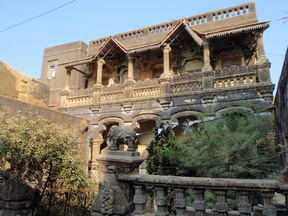
Thus it has different rules i.e.) rather than being dry as is all of Gujarat it is a duty free zone where alcohol is freely - and very cheaply - available. For this reason we had delayed getting here over New Year as it was said to be full of very drunken Indians and we thought it would be impossible to get a good quiet camp spot.

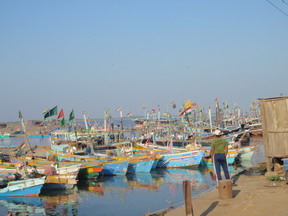
Whilst we did see some incredible drunken antics - a sort of middle age Indian "schoolies' week" atmosphere - on the whole having been here 2 weeks (we only intended to stay 4 days but Diu has a relaxing quality and tends to do this to you!) we think we'd have been ok.
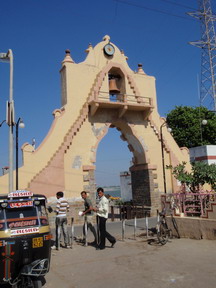

 This is high season and there are a few tourists around - an eclectic mix Aussies, Europeans, Israelis and even 2 really nice guys from Lebanon as well as bus loads of Guajaratis who flock in around the weekend - but in general Diu has a really quiet peaceful vibe. If you steer away from the main beach of Nagoa which is the main centre of boozing carousing Indians - it's quite possible to find a quiet corner to camp with a sea view and that's what we did enjoying a few different ones around the island.
This is high season and there are a few tourists around - an eclectic mix Aussies, Europeans, Israelis and even 2 really nice guys from Lebanon as well as bus loads of Guajaratis who flock in around the weekend - but in general Diu has a really quiet peaceful vibe. If you steer away from the main beach of Nagoa which is the main centre of boozing carousing Indians - it's quite possible to find a quiet corner to camp with a sea view and that's what we did enjoying a few different ones around the island.
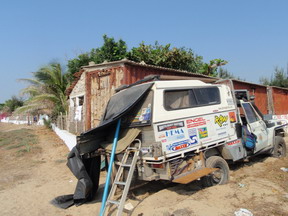
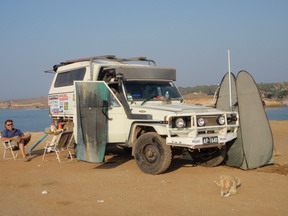
Diu never came under British rule but was ruled by the Portuguese, and there is a statue of the first governor Dom Nuno da Cunha in the town centre. The Portuguese resumed full control in 1535 and kept it kept right up until 1961 when they were finally ousted in a conflict which killed 7 Indian soldiers and a few civilians. There is a memorial in town to commemorate them. Indians born before this date can still obtain Portuguese passports and Portuguese influences still abound here like in Goa.
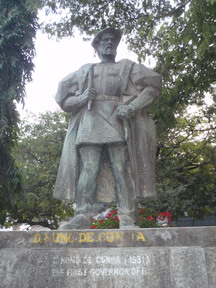
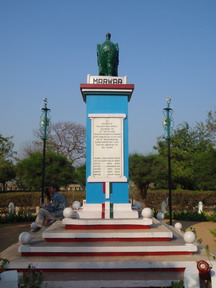
One influence is a strong Roman Catholic community which remains to this day and there are several imposing Portuguese churches around- the most impressive being St Pauls. Founded in 1600 by the Jesuits and rebuilt in 1807 it is allegedly one the most elaborately facaded churches in India with a frieze of sea shell motifs around it.
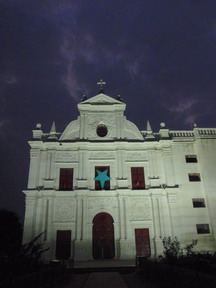
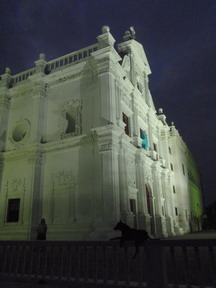
Mass is still heard here daily, and once a month at nearby St Thomas's another church which houses the Diu Museum. This is really no more than a somewhat spooky collection of old statues of saints which are still used in a special yearly mass each November.
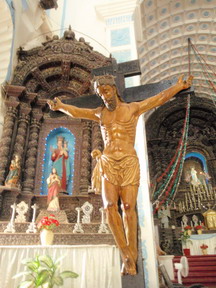
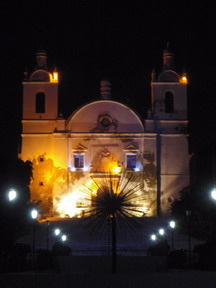
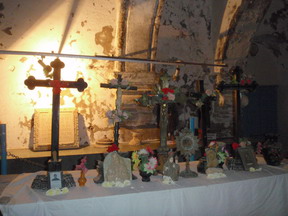

Part of St Thomas's is now run as a guest house and the owner George let us climb up onto the roof which had an incredible 360 degree view down over Diu. George also holds a BBQ every other day and we made it to a couple which was a good way to meet other travellers. We saw a couple more old Portuguese churches around the island but they were very clapped out - full of pigeons and their droppings. There are quite a few Hindu shrines and temples around too and a noticeable Muslim community. Unlike some of the towns in neighboring Gujarat - where there were bad riots in 2002 - thankfully Diu seems to be very harmonious with no tensions between the different religious groups.

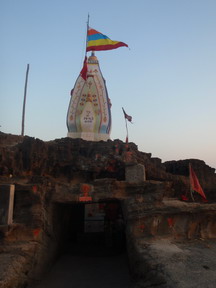
The area around St Thomas's is still known as the "foreigner's quarter" and it is where most of the Portuguese descended population still lives.
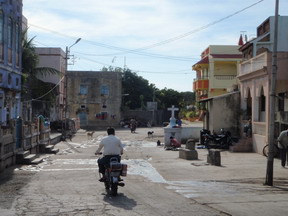
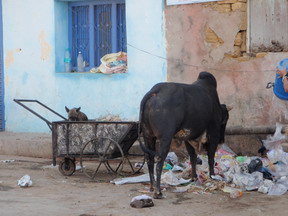
The streets here have a real Portuguese fishing village feel - a maze of narrow winding streets (but to show we're in India as ever rubbish eating cows and dogs abound!) with small businesses - goldsmiths, tailors, little general stores - everywhere.
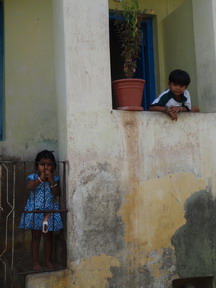
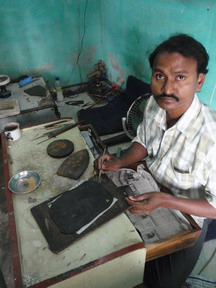
There are some beautifully coloured old havelis and temples and lovely old Portuguese architecture - much of it still interesting despite being in a somewhat decrepit state.

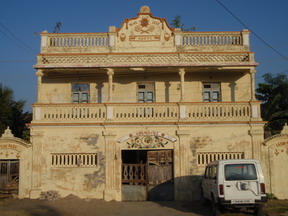
Everyone was very friendly and interested in us and our journey - the guy in our picture with the guitar is in the Indian merchant navy and has been all around the world including to Sydney a few times. He wanted to be on our site - so there you go Mietsh!
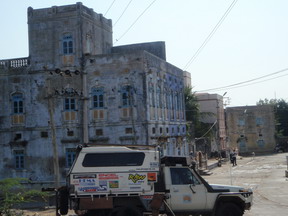

Travelling in India is wonderful but can be very tiring and we both really enjoyed a good relax in Diu. We were even here long enough to have a "regular" restaurant - La Dolce Vita - a little place with fantastic coffee and really good fresh seafood where we treated ourselves to the fish and chips which were superb.
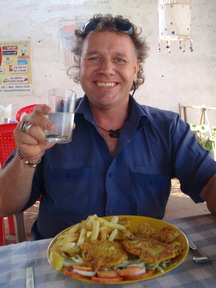
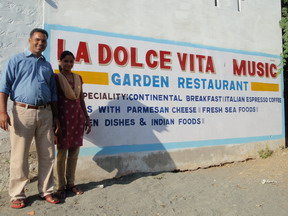
We got to know a few of the long term local residents - an interesting bunch including a retired Darwin mango farmer who has lived here for 5 years, and a German sailor -and we started to feel a bit like locals ourselves after a while! The food was superb - for the entire 2 weeks we've eaten fresh seafood every day washed down with either Goan Port wine (100 rupees a bottle) or Kingfisher Beer (50 rupees a bottle in the restaurants only 38 direct from the bottle shop!) There was also a great central market selling fresh fruit - no wonder we got stuck here!
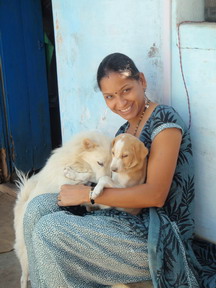
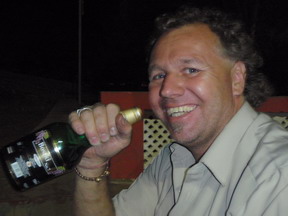


We took the opportunity to both update the website and reply to our Xmas emails which isn't always easy on the road and a part of the daily routine became going to the A-Z Cyber Café. This doubles as a computer training centre for Indian students and they actually used our website as the basis of a training exercise to help students learn to negotiate the internet!
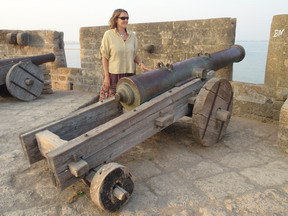
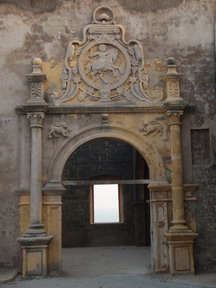
We had a quick look around the fort. Built in 1535 this was still an imposing structure though decay and sea erosion is now moving in. Cannonballs and cannons line the imposing walls. Out to sea is the Fortim-do-Mar which was once the jail. We were keen to go out and see it but it wasn't possible due to the rough seas. Part of the main fort is still a working jail (though it only houses 3 prisoners!! ) We had a walk around the walls and made it up the lighthouse in time to see an impressive sunset over the ocean.
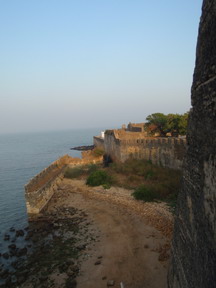

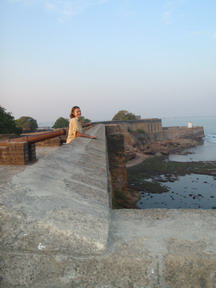
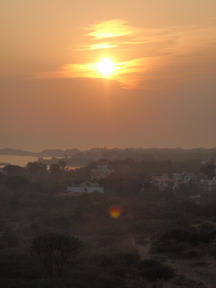
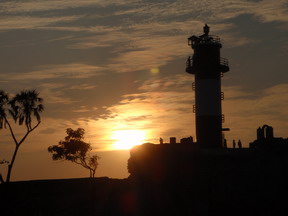

We fitted in a few day trips to local fishing villages a couple of which - Vanakbara and Gupta Prayag - had a sideline in wooden boat building which was really interesting for Andrew. The drive towards the villages was very smelly as they are a big centre for fish drying and the stench on approach was unbelievable - I guess you get used to it - and once past the outlying areas mercifully it got better.
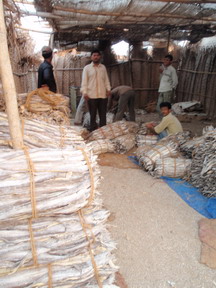

These villages probably don't get a lot of tourist traffic and as ever we were the focus of a great deal of very friendly attention -the entire village took a walk up the jetty with us!
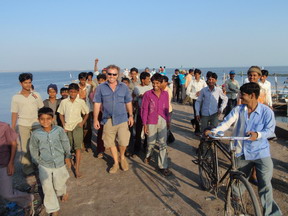


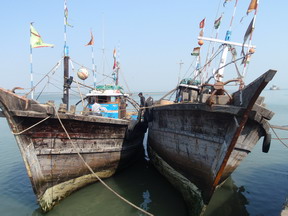
We had a look around the fish markets in Gupta Prayag - a real hive of activity. The men were unloading the fish and sorting it and passing to ladies who stacked it on trucks from where it goes to Delhi (and elsewhere presumably) to market.
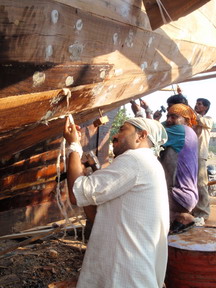
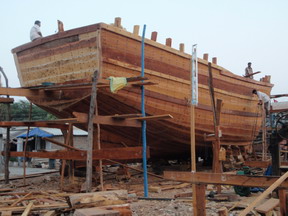
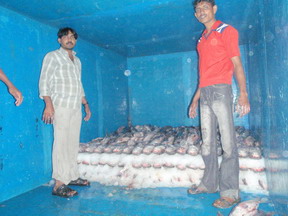

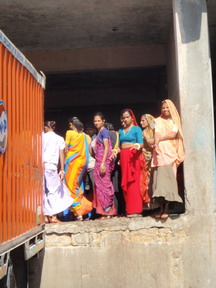
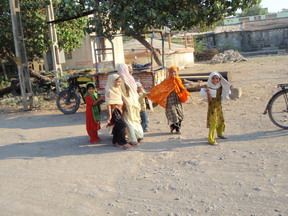
We also took a trip out to the small town of Simbor which had its own small fort and a lovely long beach - though we saw a dozen or so sea snakes washed up which put me off going for a dip!!
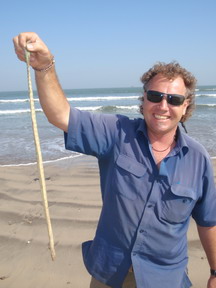

We had a beach walk and watched a game of cricket - no English spoken out here but again very friendly people. On the way we passed through the small town of Delvada. This was formerly a Portuguese community with some lovely old architecture - a few grand old merchants' houses - now somewhat decrepit but with an army of locals still living in the ramshackle interiors.

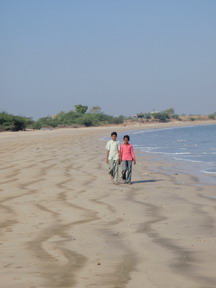
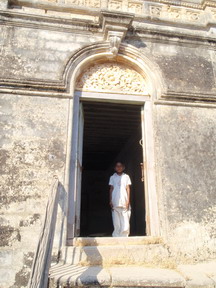
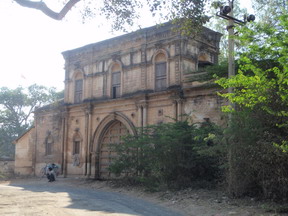
The drive around the island took us past some lovely long beaches and also some tidal marshes which are a haven for bird life - we saw 100s of different birds as well as a few buffaloes taking a dip!


We had already established that the area was a bit of a wildlife haven. We had been woken up once or twice whilst camping out of town by what we thought were feral cats. Whilst sitting at our camp spot each evening we realized that what we were hearing was foxes when - after a few days getting used to us presumably- a group took to trotting past us each evening. One evening sitting relaxing I saw what I thought was a particularly large dog - Diu abounds with dogs and an incredible number of new puppies. As it came nearer we saw it was in fact a hyena! It was far larger than hyenas we'd ever seen before. Blaming the Kingfisher Beer we asked around and were relieved to be told that yes hyenas (as well as foxes and wolves) do live on Diu. More worrying so does the occasional lion!! Our next stop when we finally tear ourselves away from Diu will be the wildlife sanctuary of Sasan Gir about 100km to the north where the asiatic lions lives in a designated protected area. The protection has been so good that numbers have doubled in recent years meaning that the lions tend to wander farther afield looking for food and a few have been sighted around the beaches of Diu!! This was a bit of a scary thought and we started checking our camp spots very carefully before turning in for the night! We saw the foxes nightly and the hyena a few times more but thankfully no lions!! On a more mundane level there was a lot of bird life around our camp sites and we got to watch dozens of lovely green parrots and many Kingfishers - though the latter were very hard to catch on camera!
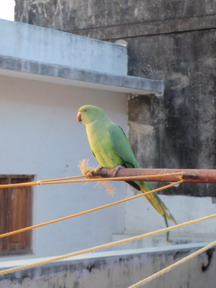
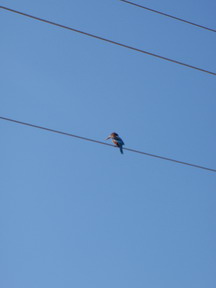
We took a trip out to the Gangeshwar sea temple which was full of devotees making offerings and has Shiva lingas carved in the rock which are submerged when the sea comes in. This area of the coast was vey craggy and volcanic with stunning ocean views.
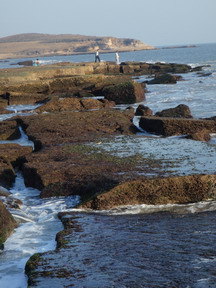
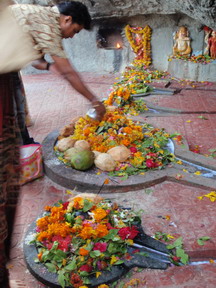
Interestingly we found that this was the area where the Parsis first landed prior to relocating to Bombay and all becoming business tycoons! As mentioned elsewhere the Parsis came from what is now Iran in the 7th century to escape persecution by the Muslims. I read one account of the initial arrival of the Paris which describes how they moored their boats off the coast and sent a message to the ruling powers to ask if they could land. The reply was a full dish of buttermilk which apparently (hopefully there was a covering note to make this clear!) meant "my land is full - we don't need more people - if you come it will be too full and over flow." In reply they returned the buttermilk sweetened with honey with a note the gist of which was "we intend not to displace your people - but to add our own culture and learning to yours." Due to the smart reply they were allowed to land and stayed in Diu for 3 years before they moved to Bombay/Mumbai where they were soon running the show. Anyway whilst here they built a few towers of silence - where as is their custom their dead were placed to be devoured by vultures. We had seen the outside of one in Mumbai but as this one hadn't been used for a good while you could go in and have a proper look around it which was interesting. It still had a bit of an eery atmosphere!
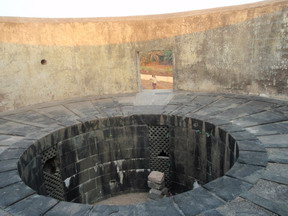

On a similar note down the road from our camp site was a centre for cremating bodies prior to putting the ashes in the sea. We wandered in thinking it was a temple and were initially perplexed by the 3 large BBQs!!! We did see it working one night but kept well away!
We had a quick look at the Sea Shell Museum which was a real labour of love. A collection of shells gathered from all around the world over the last 50 years this was set up and maintained by Captain Devibhai Vira Fulbaria formerly of the Indian merchant navy. The Captain generally doesn't allow photography in his museum but we persuaded him to pose for us!
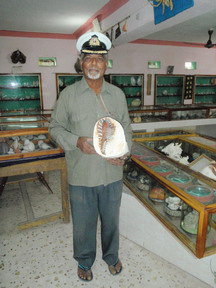
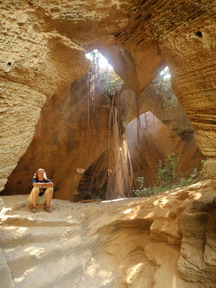
One other little side trip was to the Naida Caves a quite striking network of square hewn hollows where the Portuguese (or rather their local slave labour! ) hacked out building materials. It was an atmospheric place - but this was just when we'd heard about the possible presence of lions in Diu (see above) and it was a bit too easy to imagine them lurking around every corner so we didn't linger long!!


Finally before we left we felt we had to climb the hill to the INS (Indian Naval Ship) Khukri Memorial as, perched on the Southernmost tip of the island at sunset point, we'd been gazing out at it since arriving. Erected in 1999 this memorial is a tribute to the courage of the 18 officers and 176 sailors of this vessel. Hit by a 3 Pakistani torpedoes in the 1971 Indo-Pak war, the entire crew chose to go down with their ship. Whilst not doubting their extreme courage this seemed a crazy decision to us - it didn't really affect the war's outcome and surely that's what life boats are for! Anyway they now all have a nice peaceful resting place with a great ocean view.
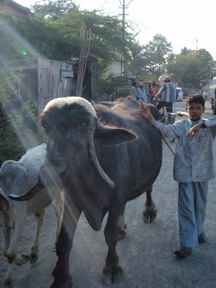
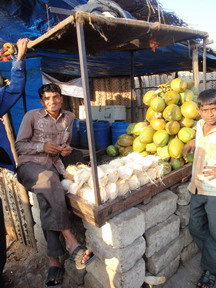
So -sadly after saying we'll go "tomorrow" for the last week we really have to do it now or we'll be here forever!! Tomorrow (really!!) …we head to the Sasan Gir Wildlife Sanctuary where we hope to see those asiatic lions which haven't wandered down to Diu.
 Well we stayed in Diu almost another week after writing this!! We got into a really nice routine - sleeping in, going for really good Italian coffee at La Dolce Vita, hanging out down the beach & socializing with lots of really nice people from all over (Poles, Brits, Aussies Germans French Greeks) so we just kept staying for "one more day." We must have imbibed the laid back air here - very Portuguese the town shuts down for a 2 hour siesta in the middle of the day during which time nothing is open. We loved the local auto rickshaw "school bus." The one in our picture needed a wheel change and they didn't bother to unload the kids before getting on with it!
Well we stayed in Diu almost another week after writing this!! We got into a really nice routine - sleeping in, going for really good Italian coffee at La Dolce Vita, hanging out down the beach & socializing with lots of really nice people from all over (Poles, Brits, Aussies Germans French Greeks) so we just kept staying for "one more day." We must have imbibed the laid back air here - very Portuguese the town shuts down for a 2 hour siesta in the middle of the day during which time nothing is open. We loved the local auto rickshaw "school bus." The one in our picture needed a wheel change and they didn't bother to unload the kids before getting on with it!

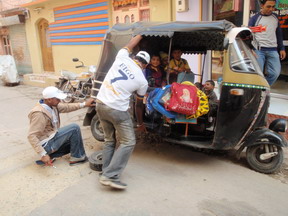
We did have a bit of sadness too. I mentioned that Diu is over run by dogs and we had got very fond of a little puppy that used to meet us every morning as I saved some scraps for him. One day he didn't arrive and we later found him in pain outside a local guest house. It was Sunday so the vet wasn't open but we tried to make him comfortable. We thought he might have been hit by a car but his bones seemed ok - though his legs wouldn't work. His stomach was swollen and seemed very painful. Someone said they'd seen other puppies with similar symptoms so we thought perhaps he'd been poisoned. Next morning we hoped he'd be a bit better but he was still bad so we took him to the vet which was an absolute joke. There was an office and 3 people working in it but no vet. Apparently the last one left 3 years ago and nothing had been done about replacing him. There were no facilities to keep animals in, no x-ray equipment - so really we got no further forward. Puppy was in pain by then so we took the difficult decision to have him put to sleep which the sole technician there was able to do. There were no other vets for a radius of 1,000 km and we really couldn't take him with us-he'd have had to sleep outside and would have been in great danger - also as I said he was in pain by now. We were really upset though - it was a hard decision but we would have had no choice but to leave him in pain on the streets to survive so we thought it for the best. We buried him on the headland a good spot with a view of the ocean. RIP puppy.
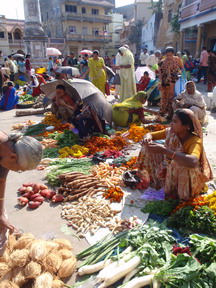

For the last few days in Diu we explored the vegetable and fish markets and brought some HUGE prawns which we had cooked at La Dolce Vita.


We also cooked a BBQ down on the beach -which was great fun -like being back in Oz. We also tried a few more local restaurants - O'Coqueiro specializing in Portuguese cuisine and Resort Hoka for seafood - both come highly recommended.
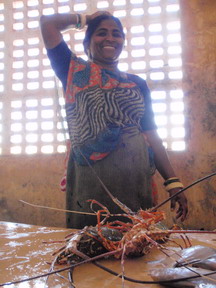

By this time locals were taking bets that we wouldn't leave Diu - a lot of people live here for the European winter so there's quite an ex-pat community - but finally on Thursday 28 January - after a last swim and a final seafood salad for lunch - we tore ourselves away and headed north off the island and back into Gujarat towards the Sasan Gir National Park.
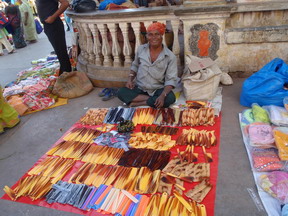
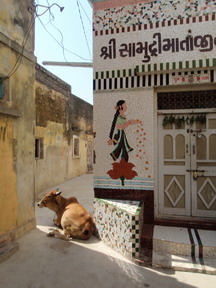
We got there just as the sun was setting and pulled up at the Orientation Centre. We weren't sure where we were going so were pleased to be approached by Nitin Ratangayra. As mentioned in the LP Nitin welcomes guests into the home he shares with his extended family. He allowed us to camp for free and join them for meals - it was a bit of a tight squeeze getting the toyota down the back alleys to their house - but we managed it. We then went for a bit of a wander around Sasan Gir.
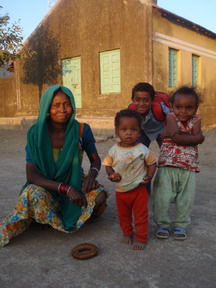

We had noted before in parts of Gujarat that a lot of the local people were very African in appearance and this was very evident here. The coast along this area once traded very heavily with Africa. The African-Indians who came over during this time (over 400 years ago) are known as Siddis and form a separate class of Dalits or untouchables some villages in the region have music with a particularly African flavour. The orientation centre mentioned earlier has a lot of information on the park and its animal inhabitants and also every evening a movie about the park is screened there (actually a BBC production) which was really interesting.
We then headed back to Nitin's house where we and his other multiculturally diverse guests - NZ, Belgian, French, and Japanese - enjoyed a really fantastic Gujarat Thali. A change from fish!!
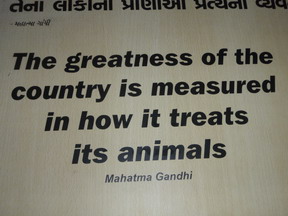

Then it was off to bed so we could get up for a 6am start the next morning. The cost of going to wildlife parks for foreigners in India has risen dramatically over the last few years. The cost probably isn't huge if you're on a short term trip but for long term travellers on a budget (like us) it was huge. The cost was $10 USD per person to get in the park, and $40 USD for the cost of the jeep. There was a huge cost (around $500 USD from memory) to take our big camera in so we just took the little one which still cost $10 USD. The cost of the jeep could be shared between up to 6 people (probably 4 westerners for comfort!) but unfortunately the other 4 westerners we'd met had already booked a separate trip for a couple of days.
Indians pay a fraction of these costs. This seems a bit unfair as a lot of the Indians who do travel are probably way wealthier than us. Nihin told us that his business has reduced hugely since the fees shot up a few years ago as he deals with budget travellers whereas the wealthy ones stay at the big end resorts of which there are a few locally. Anyway on that Friday morning we had been hoping that we'd find some other westerners to split the cost. When none materialized we thought we might wait a day until Nihin told us that there was on top of these charges 25% extra to pay on the weekend. In addition if you hit a holiday period (of which there are quite a few in India) it is 50% more on top!! We felt this to be a bit cheeky. Anyway this decided us to bite the bullet and take a jeep on our own that day.
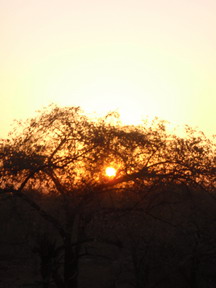

As mentioned in the Diu page as the park has run a successful breeding program it is now a bit over crowded and we were worried that this might be apparent but it wasn't the park felt a nice environment for the animals. As well as lions there are many species here including leopards, hyenas deer foxes monkeys crocodiles and numerous birds. We had a quick look at the crocodile breeding centre - but that is one thing that we do bigger and better in Darwin!
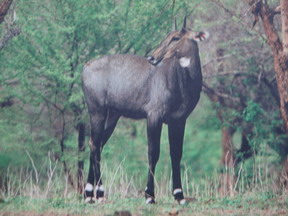

Incidentally Nihin was amazed that we had seen a hyena - this is apparently very unusual compared to seeing leopards or lions and he felt we were very lucky when we told him we'd seen one every evening in Diu!! Personally I'd rather see a lion or leopard- but maybe not at my beach camp site!
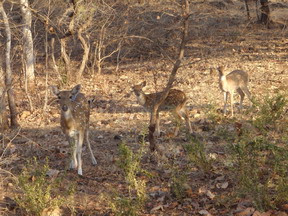
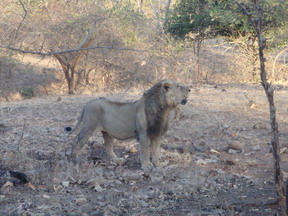
Anyway off we drove on a chilly morning across the rugged hilly 1,400 sq km of the sanctuary. Neither of us have been to Africa -but it's just how we imagine it. The Asiatic lion once lived across Pakistan Iran and as far as Greece. These regal looking creatures were the biblical lions which fought with Christians. Sadly they have died off as man encroached on their territory and hunted them for sport. Last sighted out of Delhi in 1834 the 400 in this park are now the last existing anywhere in the world. In 1965 when it was found that they numbered only about 20 the Nawab of Junagadh stopped hunting them and set up this sanctuary to protect them. As mentioned they now number over 400. There have been attempts to relocate a few to parks in other states but Gujarat seems to be taking a somewhat chauvinistic "Guajarati lions belong in Gujarat" type stance and blocking these schemes. Hopefully this will be resolved!
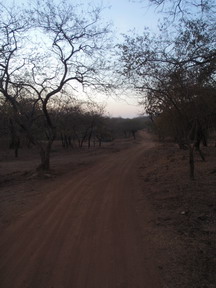
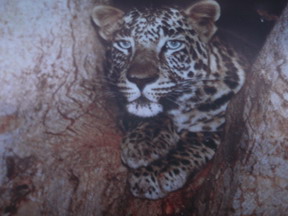
Amazingly the lions share their home with people - the local Maldharis -or herders who live in distinctive villages called nesses. These settlements again look very African consisting of round hunts and a central area in which the animals are placed at night. These people are vegetarian and keep buffaloes purely for milk. Thus when they lose stock to lions they suffer a great deal - and the government paying them 25% of the animal's value as compensation doesn't overly help. Some of these people have been relocated by the government but it is clear that they must be helped if they are not to suffer greatly. Thus relocating some lions would benefit them greatly.
The Asiatic lion differs from the African in that its mane is thinner on top and it has a distinctive fold of skin along the belly. They also are less sociable with each other and the adult males live alone. First we heard it and then we saw it - a large adult male!!!
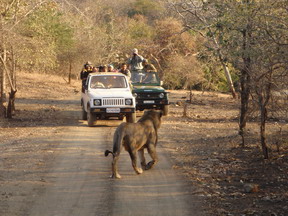

These lions are definitely wild but a bit used to humans and as he walked past he turned and gave us a long cool appraising stare - sadly we missed this on camera -but it was as close as I want to get to a lion in the wild! It was a spine tingling experience which was a really big thrill. No leopards sadly but we saw many (understandably nervy- looking) deer including, nilgai (like a horse crossed with a fat deer) sambar & chital (the lion's main food) as well as a wealth of bird life.
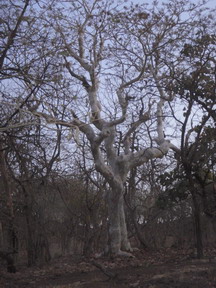
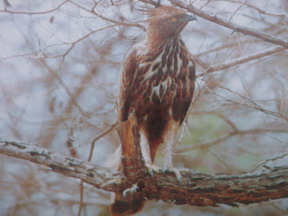
It was an amazing experience and if made more affordable we're sure more travellers would go. Nitin later told us he arranges separate tours which work out far cheaper if you get a group together - by passing the government area and going into the areas around the sanctuary where animals can still be sighted. We hadn't realized this was possible before and thought we had to go on the government tour only. Call him directly on (0) 9979 024 670 - definitely a better way to see the area if you're on a budget and it was a great experience staying with him and his friendly family too.
So on Friday 29 January we left our safari experience behind and drove on up the coast towards our next destination the pilgrimage town of Somnath.
